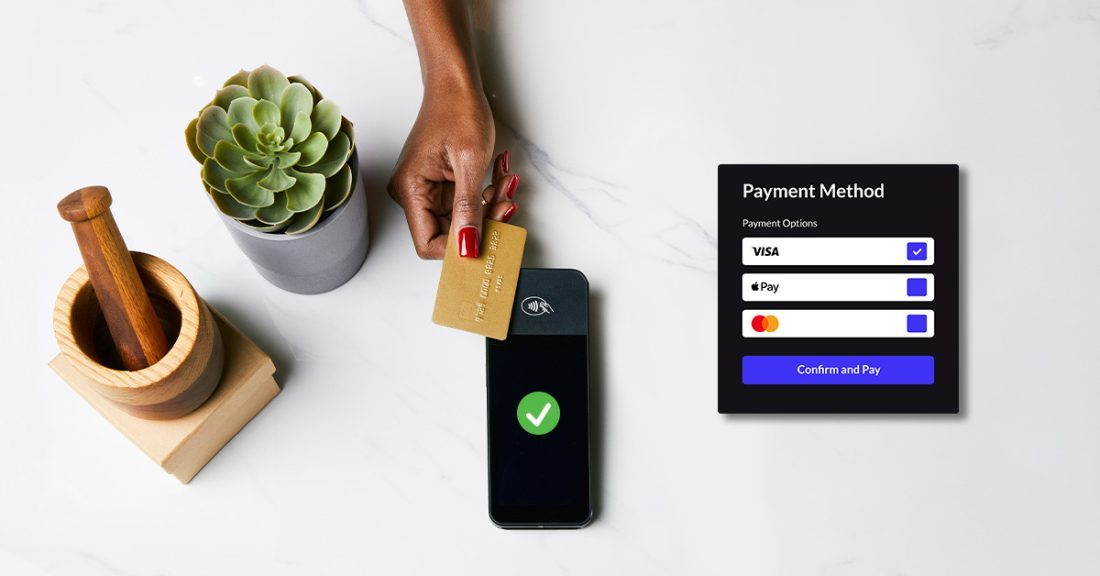
Inflation continues to be a widespread concern for businesses and consumers alike. According to an October 2022 survey by Deloitte, over 70% of consumers said they’re concerned about the rising costs of everyday purchases.
And as prices continue to increase, we can expect shoppers to shift their buying behaviors. Industry data shows that people’s budgets will be more focused on essential items like gas and groceries; so if you’re a specialty retailer (e.g., electronics, sporting goods and homegoods retail) you could find yourself at a disadvantage in 2023.
To help you navigate this challenging period, we’ve put together 10 action steps for dealing with inflation in retail. Take a look below and see what you can apply in your business.
- Know your numbers
- Consider raising your prices
- Identify areas of waste in your business to reduce expenses
- Support multiple payment types
- Market to existing customers
- Make smarter purchasing decisions
- Be smart about implementing discounts
- Re-negotiate vendor agreements
- Find other revenue streams and opportunities
- Tap into other funding options
New year, new POS
Looking for a better way to manage your retail business? Watch a demo of Lightspeed to discover how our platform can help your business grow.
1. Know your numbers
You know what they say, “You can’t improve what you don’t measure.”
If you want to improve your financial position in 2023, start by knowing key metrics and figures in your business. Pay attention to your KPIs, so you know where your business is at, financially.
At a fundamental level, the metrics to closely track are:
- Revenue – Always know how much you’re bringing in (per day, week, month, etc.). Having a clear idea of how much money enters your bank account gives you insights you can use in your business decisions. For example, if you notice your revenue trending down, you can get ahead of the issue by coming up with ideas to drive sales.
- Gross and net profit – Of course, it’s not just about how much money you make, it’s about how much you keep. So, pay attention to the profits you’re bringing in after taxes and other expenses.
- Monthly expenses – Cost-cutting is often necessary during times of economic uncertainty. And the best way to figure out what and how much to cut is to look at your expenses and identify areas where you can spend less.
From there, you can start slicing and dicing your data even more. For example, you can look at your revenue and profits at a product level to figure out which items are actually making you money.
You can make financial tracking much simpler by using a POS and retail management system with robust reporting capabilities. That way, you won’t need to manually record metrics or crunch the numbers. When you’re using a modern solution, you can get your hands on the info you need and make smarter decisions.
For best results, integrate your POS with your accounting software. This ensures that sales and order data smoothly flow from one system to the next, thus reducing manual entry and discrepancies.
2. Consider raising your prices
If your business has taken a hit due to rising costs, it may be time to increase your prices. This is obviously a tricky task; a price increase rarely bodes well with consumers, but it’s part of the territory when running a business amidst today’s economic climate.
The right pricing strategy will vary from one business to another. For some stores, it’s best to do an incremental price increase for select products. For others, a more aggressive (read: larger) increase across the board is necessary.
To figure out the best course of action, look at your revenue and profit margins. If a particular category is suffering from tight margins, then it may make sense to increase prices in that area, but not others. On the other hand, if profitability is a widespread issue in your business, then consider doing a catalog-wide increase or identifying your fastest-moving products and repricing those items.
If you run multiple locations, you may find that inflation or consumer price sensitivity is worse in certain areas. If this is the case, then raising pricing in select states or cities may be the best move.
From there, educate your sales associates on your pricing strategy. Your team will likely have to field questions from customers, so it’s important to equip them with the right information and talking points. Focus on conveying the value of your products and assure customers that raising prices is a necessary move that would allow your business to serve them better.
3. Identify areas of waste in your business to reduce expenses
Unnecessary spending is… well, unnecessary especially when you’re dealing with inflation. It’s a good idea to carefully review your expenses and identify areas in which you can reduce spending.
The principles of lean manufacturing offer excellent guidance on identifying and reducing waste. According to the lean manufacturing framework, waste can be classified using the acronym DOWNTIME:
D – Defects
O – Overproduction
W – Waiting
N – Not utilizing talent
T – Transportation
I – Inventory excess
M – Motion waste
E – Excess processing
Look at your expenses using the “DOWNTIME” lens and adjust your spending and practices accordingly.
For example, if you discover that you have underutilized talent in your business, then you may need to make changes to team responsibilities and scheduling. Excess inventory is another common area of waste in retail. If you find yourself sitting on surplus stock, now is the time to move and liquidate it.
Many retailers also overlook “Excess processing,” which can come in the form of double work or admin tasks. If you need to re-enter data from one system to the next or spend hours manually checking the work of your team, then strive to streamline and automate your business.
As mentioned above, one way to do this is to integrate your different business apps and tools to reduce double entry. You can also automate various processes in your business.
Let’s say you expend quite a bit of energy identifying which products to order. One way to streamline this process is to use a POS with automatic reorder points. Another tip? Use integrated payments so cashiers won’t have to manually enter payment data at the checkout counter. Doing so eliminates human errors, speeds up checkout and ensures less time is wasted in your business.
4. Support multiple payment types

Inflation means that more people are putting purchases on their credit cards. See to it that your business can accept all credit cards and related payment types like mobile payments.
If you’re using Lightspeed, explore the platform’s payment capabilities. Lightspeed Payments offer integrated payments with transparent pricing that’s easy-to-understand. With Lightspeed Payments, you always have a clear idea of your processing costs and there are no surprises when it comes to fees.
You’ll also have a more streamlined payments experience with hardware, software and customer support in one place.
Another way to support your customers during their challenging period is to offer payment flexibility. Lightspeed’s built-in layaway/layby capabilities and integration with “buy now, pay later” solutions like Klarna enable you to offer cost-effective solutions to shoppers who are unable to pay for their purchases upfront.
5. Market to existing customers
It’s more cost-effective to sell to existing customers than it is to market to new ones.
Now, we’re not suggesting you should neglect customer acquisition. However, it’s important to remember that having a strong customer retention strategy allows you to extract more value from shoppers, especially during these times.
If you haven’t done so yet, devise a plan to reach and convert existing customers. Consider the following ideas:
- Treat your VIPs. Give your top spenders exclusive or perks—like early access to promos, special events, etc.
- Reconnect with dormant customers. Identify shoppers who haven’t bought from you in a while, and re-engage them with a “We miss you” message.
- Launch a loyalty program. Keep customers coming back by rewarding them with points or dollars that they can redeem in the future.
Customer retention is both an art and a science and you need robust tools to execute your strategy. Fortunately, Lightspeed makes it easy to engage your existing customer base. From a built-in loyalty program to customer reporting capabilities, Lightspeed helps you get to know your customers so you can convert them effectively.
6. Make smarter purchasing decisions
To successfully navigate an inflation-centric environment, you need to have a better handle on your inventory purchases. It’s more critical than ever to ensure that you’re spending money on the right products and aren’t investing too much on stock that won’t sell.
Use your POS and retail management system to make smart stock purchasing decisions. Stay on top of inventory counts and set the right inventory points so you’re not over- or under-purchasing products.
Also, keep a close eye on your product performance reports and stock movements. Doing so will help you identify trends so you can stock up (or markdown) accordingly.
7. Be smart about implementing discounts

While sales and promotions can certainly drive revenue, discounts also eat up your profits—and that’s the last thing you want in this economy.
If you’re planning to run sales in the coming weeks or months, make sure to have a data-backed strategy that protects your margins.
One way to run sales smarter is to use conditional promotions. Set spending thresholds and amounts to ensure that shoppers are spending enough money in your stores.
Also, choose your promo type wisely and keep your goals in mind. If your objective is to move surplus stock, then BOGO may be your best bet. On the other hand, if the goal is to get as many people through your doors, then an attractive percentage discount could be the right move.
Whatever the case, look at your metrics (revenue and profits) and plan accordingly.
8. Re-negotiate vendor agreements
Still on the topic of reducing expenses, one way to lower your costs is to negotiate your current vendor agreements. Your contract renewal periods provide an excellent opportunity to do this.
Let’s say your location’s rental agreement is up for renewal. One thing you can do is research rents in your area. If you discover that you’re paying above-market, it’s a good idea to negotiate with your landlord.
Do the same thing with your insurance company. Get quotes from other providers and see if you can lower your insurance premium.
9. Find other revenue streams and opportunities
Navigating a challenging economic environment isn’t just about cutting expenses; it’s also about increasing your revenue.
To that end, strive to find additional revenue streams and opportunities. Consider selling on other channels and marketplaces. For example, if you’re strictly an offline retailer, it may be time to set up shop online and on social media.
If you already have a presence on these channels, see if it makes sense to expand your offerings. Some brands are opting to sell digital products, subscriptions and services to drive more sales.
10. Tap into other funding options
If you need funding and capital for your business, know that you have options. Look into grants and low interest loans that can help inject cash back into your company.
Credit cards and bank loans are common funding sources, but they may not always have the best terms for merchants. Look into alternatives such as cash advance programs that provide capital for a flat fee.
For instance, Lightspeed offers a cash advance program to give qualified merchants access to reliable funding quickly. If you’re eligible for Lightspeed Capital, you can apply for funding and once approved, get the funds sent to your bank account in as soon as two business days.
The balance is remitted through a percentage of income from your credit card sales. Since Lightspeed Capital is a cash advance program (and not a loan), there is no set payment schedule. Instead, the balance is remitted whenever you make sales.
How Lightspeed helps retailers deal with inflation
It’s a tough environment for retailers, but solutions like Lightspeed can make your life easier. Here’s how our one-stop commerce platform enables you to do more (and do better) with less:
- Powerful reports. Gain insights into your revenue, inventory, sales and orders so you can get a solid handle on your financials. Use data from Lightspeed to make smarter business decisions.
- Customer-centric marketing tools. Keep customers coming back with built-in tools for communicating with shoppers and driving sales. Launch a loyalty program, run promos and touch base with shoppers to entice them to spend more.
- Seamless integrations. Connect the multiple parts of your business to reduce manual work and human error. Streamline your operations and spend less time and money on non-revenue generating activities.
- Convenient payment solutions. Accept all the ways your customers want to pay and offer buy now, pay later to encourage people to buy. Plus, with Lightspeed’s integrated payments, you get transparent pricing and always know what you’re paying in fees. Plus, you’ll have a streamlined payments experience, with hardware, software and customer support in one place.
Lightspeed can help in all these areas and more. Talk to a retail specialist to discover how our retail platform can help you thrive in 2023 and beyond.

News you care about. Tips you can use.
Everything your business needs to grow, delivered straight to your inbox.



